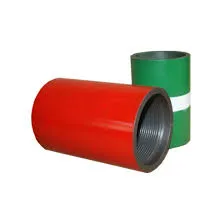- Afrikaans
- Albanian
- Amharic
- Arabic
- Armenian
- Azerbaijani
- Basque
- Belarusian
- Bengali
- Bosnian
- Bulgarian
- Catalan
- Cebuano
- Corsican
- Croatian
- Czech
- Danish
- Dutch
- English
- Esperanto
- Estonian
- Finnish
- French
- Frisian
- Galician
- Georgian
- German
- Greek
- Gujarati
- Haitian Creole
- hausa
- hawaiian
- Hebrew
- Hindi
- Miao
- Hungarian
- Icelandic
- igbo
- Indonesian
- irish
- Italian
- Japanese
- Javanese
- Kannada
- kazakh
- Khmer
- Rwandese
- Korean
- Kurdish
- Kyrgyz
- Lao
- Latin
- Latvian
- Lithuanian
- Luxembourgish
- Macedonian
- Malgashi
- Malay
- Malayalam
- Maltese
- Maori
- Marathi
- Mongolian
- Myanmar
- Nepali
- Norwegian
- Norwegian
- Occitan
- Pashto
- Persian
- Polish
- Portuguese
- Punjabi
- Romanian
- Russian
- Samoan
- Scottish Gaelic
- Serbian
- Sesotho
- Shona
- Sindhi
- Sinhala
- Slovak
- Slovenian
- Somali
- Spanish
- Sundanese
- Swahili
- Swedish
- Tagalog
- Tajik
- Tamil
- Tatar
- Telugu
- Thai
- Turkish
- Turkmen
- Ukrainian
- Urdu
- Uighur
- Uzbek
- Vietnamese
- Welsh
- Bantu
- Yiddish
- Yoruba
- Zulu
Understanding API Tubing and Casing Standards for Oil and Gas Industry
Understanding API Tubing and Casing Charts in Oil and Gas Industry
In the oil and gas industry, the extraction of hydrocarbons from the ground relies heavily on the use of various types of piping systems known as tubing and casing. These systems are crucial for creating a safe and effective pathway for oil and gas to flow from the reservoir to the surface. The API (American Petroleum Institute) tubing and casing charts serve as an essential resource for engineers and professionals in the field, providing important specifications that guide the choice and installation of these components.
What are Tubing and Casing?
Before delving into the specifics of API charts, it’s important to understand the roles of tubing and casing. Casing refers to the set of pipes that are installed in the wellbore to maintain its stability and prevent the collapse of the surrounding rock formation. It's also essential for isolating different pressure zones and preventing the migration of fluids. Tubing, on the other hand, is inserted inside the casing and is primarily used to carry oil and gas from the well to the surface. This distinction is vital because each component has different specifications and requirements based on the operational environment, the type of fluid being extracted, and regulatory standards.
API Standards and Specifications
The American Petroleum Institute has developed a series of standards that cover a wide range of specifications for the oil and gas sector, including casing and tubing. These standards ensure that materials and procedures used in drilling and production meet safety and performance requirements. The API tubing and casing charts detail various dimensions, weights, and material grades, which are critical for the selection process.
The charts include information such as nominal pipe size, outside diameter, wall thickness, and weight per unit length. This data is crucial for engineers when designing well systems because proper sizing can affect the well's overall integrity and efficiency. Specific grades indicated in the charts, such as K55, N80, and P110, denote the yield strength of the tubing and casing. The choice of grade can influence the tubing’s performance under different downhole pressures and temperatures, making it essential for ongoing operations.
api tubing and casing chart

Materials and Corrosion Resistance
The tubing and casing charts also highlight the importance of material selection. Common materials used include carbon steel, which is often treated or alloyed to enhance its properties. Corrosion resistance is a significant concern in many operations, especially where the fluids produced may contain corrosive elements like hydrogen sulfide (H2S) or carbon dioxide (CO2). The API charts provide guidance on selecting corrosion-resistant alloys (CRA) for extreme environments, ensuring the longevity and safety of the well.
Applications and Compliance
Implementing the standards set forth in the API charts is essential for compliance with industry regulations and best practices. This adherence not only enhances safety but also helps prevent costly operational failures. During the planning and execution of drilling projects, engineers refer to these charts to ensure that the right specifications are met, which can significantly reduce risks associated with blowouts or casing failures.
Conclusion
In conclusion, API tubing and casing charts are invaluable tools in the oil and gas industry, guiding professionals through the complexities of well construction and fluid transport. By adhering to the specifications outlined in these charts, operators can enhance the durability and efficiency of their wells while ensuring the safety of their operations. With the ongoing evolution of technology and materials, the relevance of these charts remains critical in the quest for efficient energy extraction, highlighting the importance of standards in maintaining the integrity and reliability of oil and gas operations.
-
Tubing Pup Joints: Essential Components for Oil and Gas OperationsNewsJul.10,2025
-
Pup Joints: Essential Components for Reliable Drilling OperationsNewsJul.10,2025
-
Pipe Couplings: Connecting Your World EfficientlyNewsJul.10,2025
-
Mastering Oilfield Operations with Quality Tubing and CasingNewsJul.10,2025
-
High-Quality Casing Couplings for Every NeedNewsJul.10,2025
-
Boost Your Drilling Efficiency with Premium Crossover Tools & Seating NipplesNewsJul.10,2025







